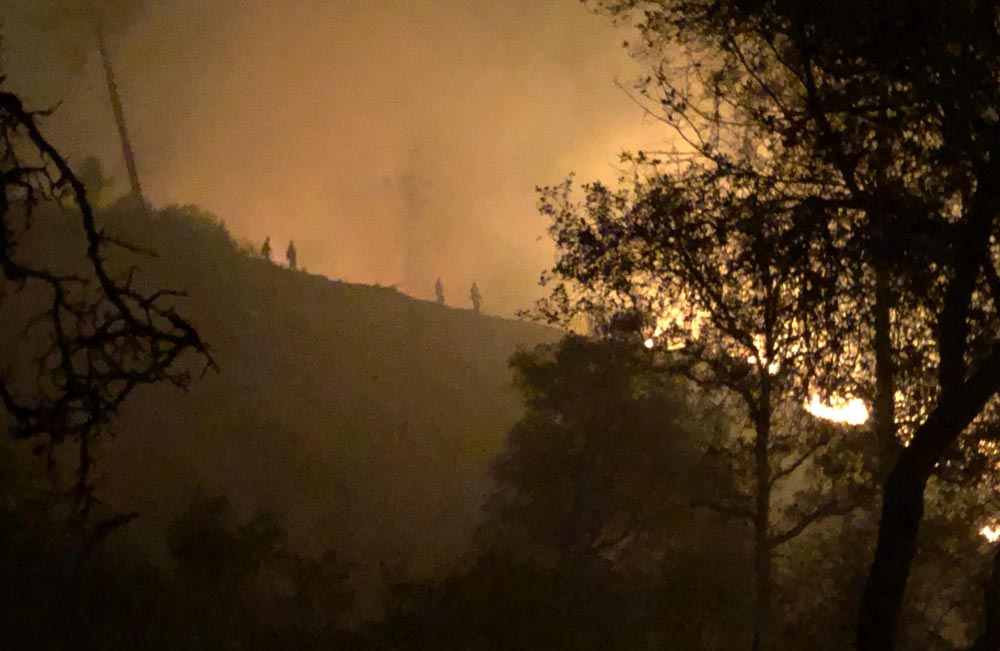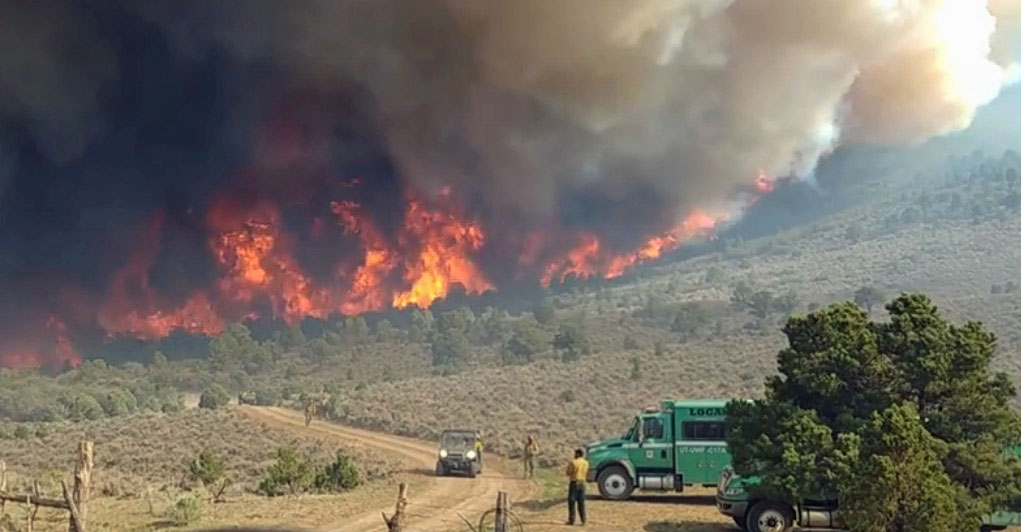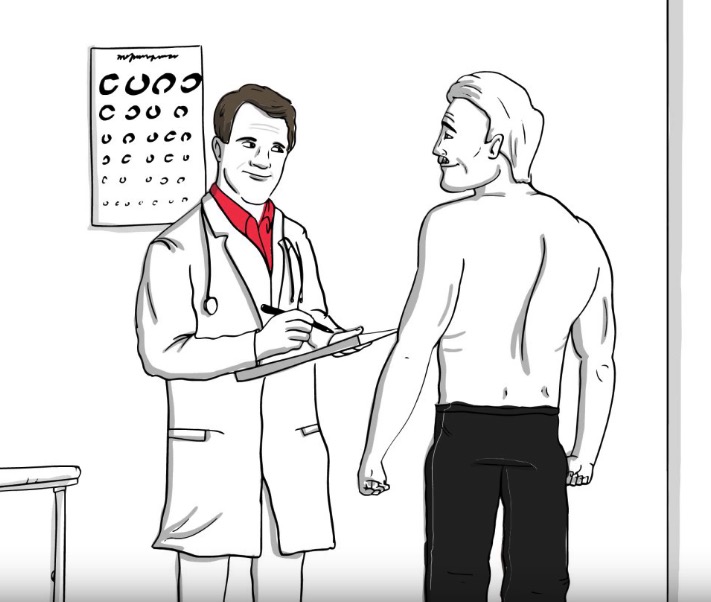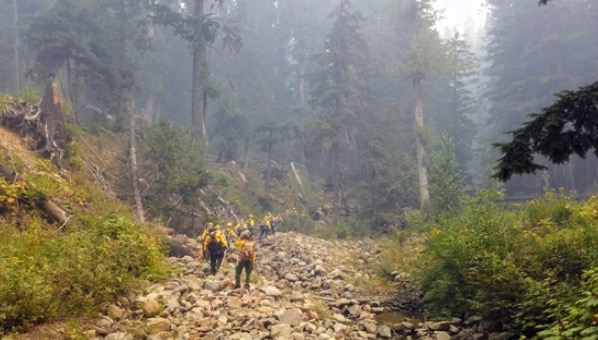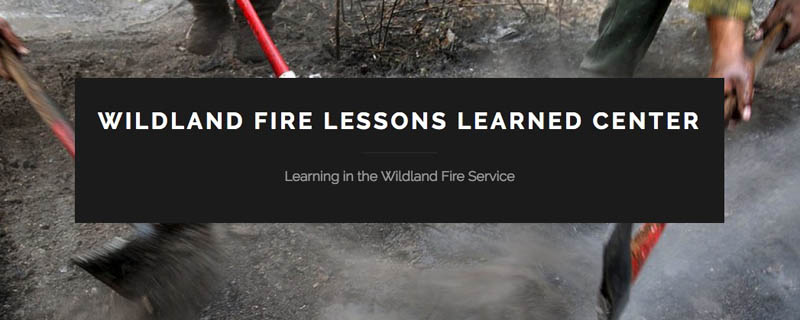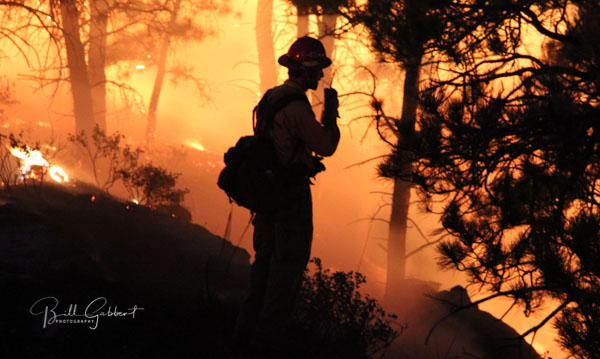
A bill that directs the federal land management agencies to begin implementing a system that would enhance the situational awareness of wildland firefighters has passed both the House and the Senate and is awaiting the signature of the President.
On February 12 the Senate passed the John D. Dingell, Jr. Natural Resources Management Act with a vote of 92 to 8, and yesterday the House passed it 363 to 62. (Update: it became law March 12, 2019 when it was signed by the President.)
The bill also includes numerous other actions related to public lands including creating more than 1.3 million acres of wilderness out West, adding three national park units, and expanding eight others.
If the bill passes and is actually implemented by the federal land management agencies it would generate progress toward what we have called the Holy Grail of Wildland Firefighter Safety, knowing the real time location of a fire and the resources assigned. Too many firefighters have been killed when the exact location of one or both of these critical aspects of situational awareness were unknown. Recent examples with a total of 24 line of duty deaths were on the Yarnell Hill and Esperanza Fires.
The technology to monitor in real time a fire and firefighting resources has existed for years. Various systems are being used already by a few state and local agencies. The military does it for their war fighters, monitoring the enemy and their own forces. If implemented on fires, it will save lives.
Firefighters lives are as important as soldiers.
“I am proud that our Public Lands package passed the House yesterday and that we were able to include in it Senator Cantwell and Senator Gardner’s seminal bill to better equip our firefighters”, said Senator Joe Manchin, Ranking Member of the Senate Energy and Natural Resources Committee. “It is plain to see that wildfires are getting worse not better, and I want to ensure these brave men and women have access to the tools available that will keep them safe, as they work to keep us safe.”
The key points, below, in the legislation have requirements for the Secretaries of Interior and Agriculture. The completion dates will be established from the time the legislation is signed. (UPDATE: the bill was signed by the President March 12, 2019)
-
- Establish a research, development, and testing program, or expand an applicable existing program, to assess unmanned aircraft system technologies, including optionally piloted aircraft, across the full range of wildland fire management operations. (within 180 days)
- Develop consistent protocols and plans for the use on wildland fires of unmanned aircraft system technologies, including for the development of real-time maps of the location of wildland fires. (within 180 days)
- Develop and operate a tracking system to remotely locate the positions of fire resources, including, at a minimum, any fire resources assigned to Federal Type 1 wildland fire incident management teams. (within 2 years) According to a press release by Senator Maria Cantwell, by the 2021 fire season, all firefighting crews – regardless of whether they are federal, state, or local – working on large wildfires will be equipped with GPS locators.
- Establish a system to track and monitor decisions made by state and federal wildland firefighting agencies to flag unusual costs, and those that endanger firefighters or deviate from an applicable fire management plan. (no time requirement)
- Assign air quality resource advisors to Type 1 incidents managing a fire on federal land. (no time requirement)
- Establish a system to collect data on firefighter injuries that were treated by a doctor, and all deaths during the Work Capacity Test, vehicle crashes, and aircraft accidents. (no time requirement)
- The two Secretaries will work with NASA to establish a “Rapid Response Erosion Database” and maps that would make it possible to evaluate changes in land cover and soil properties caused by wildland fires. (no time requirement)
- The two Secretaries, NASA, the Secretary of Energy, and the National Laboratories shall establish and maintain a system to predict the locations of future wildfires for fire-prone areas of the United States. (no time requirement)
The bill does not appropriate any additional funding to implement the real-time tracking provision. A study by the Congressional Budget Office concluded that the estimated $8 million cost is “insignificant” in the overall billions of dollars spent on wildland fire. Discussions behind the scenes in Washington are centered around small tracking devices being included in kits available from the wildland fire warehouse system which can be ordered by incident management teams the same way they order radio kits. The devices could then be distributed to personnel and other resources on fires. The newer Bendix-King radios used by firefighters already have GPS receivers which could be used to provide location data in a tracking system.
Now the question becomes, will the federal land management agencies actually implement the program to track the real-time location of fires and firefighters, or will they slow-walk it into oblivion like the Congressional orders to purchase a new air tanker, convert seven HC-130H Coast Guard aircraft into air tankers, and the repeated requests from the GAO and Inspector General to provide data about the effectiveness of firefighting aircraft?
(UPDATE February 28, 2019)
In this video Sen. Maria Cantwell talks about the wildland fire safety provisions that were in the legislation recently passed by the House & Senate. She mentions tracking fires & firefighters, as well as the #HolyGrail of wildland firefighter safety. https://t.co/9rP20JMaol pic.twitter.com/EzLxS23y0K
— Wildfire Today ? (@wildfiretoday) February 28, 2019

